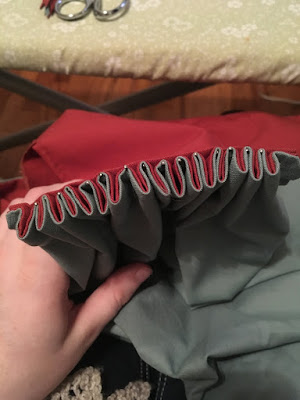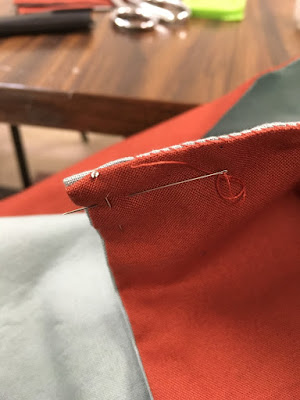 |
| This was before I cut the neck down in front to fit me better. Necks take up space, did you know that? I was totally surprised to discover this very new and shocking information. |
Next part of the fighting garb: a caftan!
Loose research for
12th-century Persian caftans suggests pleated side panels, rather than the more
wasteful shaped sides of later garments, to give the fitted torso and
flared hip silhouette.
 |
| Again with my favorite hemming stitch. |
After cutting and lining the fronts, back,
and side panels, and finishing the edges of the side gussets (which run
up into the sleeves to add a little more ease), I started pinning the
side panels to the gussets.
 |
| "Is this good enough?" No. No it isn't. |
I pinned them right sides together and with the side
panels upside down, so when I flipped the pieces back I’d have a nice
clean finish on the outside, with no visible stitching.
 |
| So many little pleats...and yes, it does bother me a bit that they aren't quite the same depth. |
I pinned pleats
until there was no room to add another set, stitched through the valleys
and went back with a tight whipstitch along the upper edge to make sure
the pieces were firmly attached.
Sore fingers at the end of it, but it
looks gorgeous.
 |
| Teeny tiny whipstitch. |
Any other raw edges were also whipstitched shut,
and the pieces whipstitched together to reduce seam bulk and give me as
much room as possible—I need to be able to move easily and without
tearing seams open.






Comments
Post a Comment